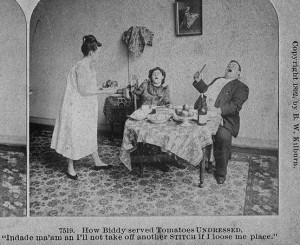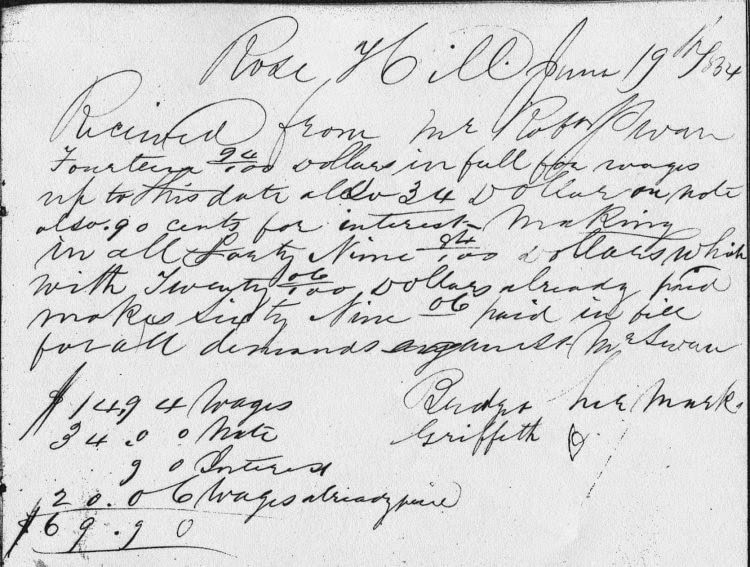Domestic Service at Rose Hill
By Anne Dealy, Director of Education and Public Information
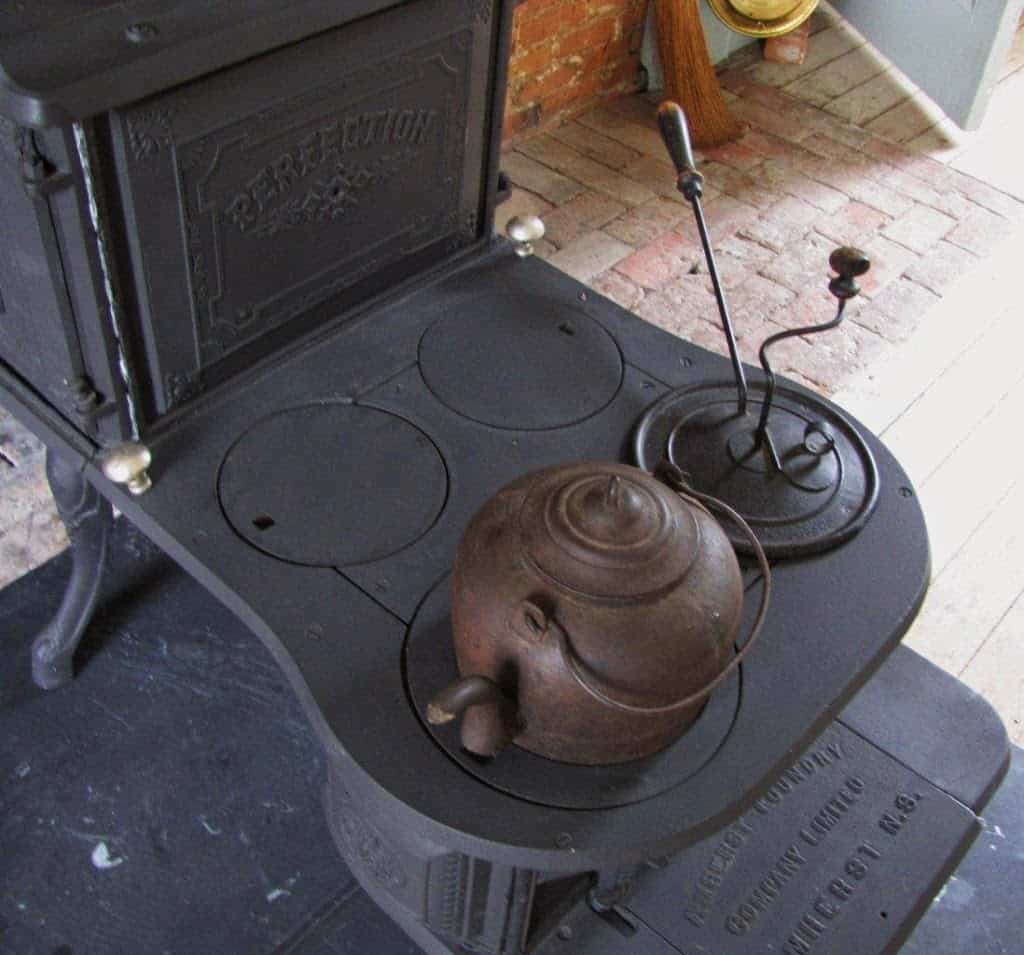
The cast iron step stove in the Rose Hill kitchen
A major part of our tour at Rose Hill is the story of the Swan family, who lived in the house and owned the farm for 40 years. However, they were not the only ones living and working there. During their years at Rose Hill, the Swans had many farm workers and domestic servants who labored on the property. While not always obvious in tours of historic houses, domestic labor was essential to the success of upper-class 19th-century households. Over the last twenty years, many historic houses have begun to incorporate the stories of laborers and servants into their interpretations in order to tell a fuller story of their sites.
At Rose Hill in the mid-19th century, the Swans hired laborers for agricultural and domestic work. This post will focus on the female servants at the house. Interpreting the life of domestic servants in the 19th century involves a great deal of research, good luck and some speculation. While many sites, including Rose Hill, have extensive information about the family that owned the property, information about the workers who contributed to the functioning of their households can be much harder to find. At the Geneva Historical Society, we are fortunate to have some primary source materials about those who worked on the farm and in the house, and it is these materials that have formed the basis for our current interpretation of servant life at the house.
Management of domestic servants would have been Margaret Johnston Swan’s responsibility. Having grown up in a house without servants, she certainly had experience with farm and housework. We know her older sister Nancy was cooking meals for the Johnston family by the time she was 14. Margaret probably did the same. Like most housewives, Margaret would have had to take on some tasks when servants quit suddenly. Margaret seems to have been less bothered by managing these tasks than her Geneva contemporary, Adelaide Prouty. Where Adelaide complains: “Sent away a girl today for impertinence & in consequence have had to do her work myself. I’m tired tonight–and disheartened, for oh what a tread mill housekeeping is,” Margaret writes in June of 1860 about feuding servants: “Penney and Ginney [sic] still keep up a quarrel. How long they will get along together I don’t know, neither do I care. There is plenty more as good as they.” By September, Penny and Ginny had been replaced.
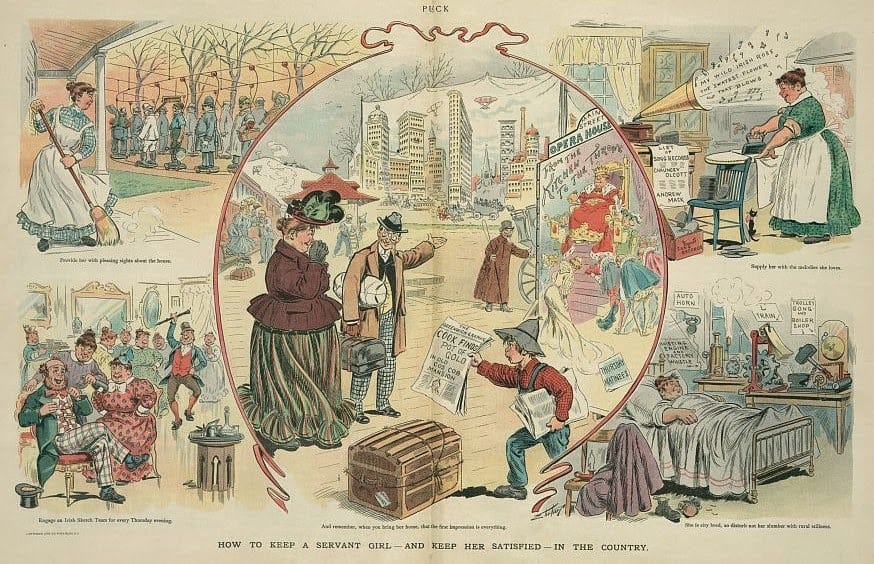
This satirical illustration from Puck magazine showed the challenge of getting Irish servants to work in the country. Courtesy Library of Congress.
Working as a servant was one of the least popular ways for 19th-century women in America to make a living. It was physically demanding, and workers were expected to be available at any time of the day or night. Living in their employer’s house, they had no expectation of privacy and could be fired on a moment’s notice. Any woman with skills or opportunity elsewhere did something else. In much of the United States only Irish immigrants and African Americans would work as domestic servants–usually because they had no other options.
What work would these female servants have done? There are very few specifics in the primary sources that we have. Several documents mention Margaret having a cook. The cook would have been responsible for feeding the family and the other servants, as well as for washing dishes and keeping the kitchen clean and orderly. She may have kept up the kitchen garden for the family, churned butter, made cheese, and pickled or preserved produce. Other female servants would have fetched wood and water, cleaned rooms, emptied and cleaned chamber pots, lit fires, washed clothes and linens, and served meals. The Swans also had a nursemaid when Margaret gave birth, though it is unclear how long the nurse stayed on to watch the children.
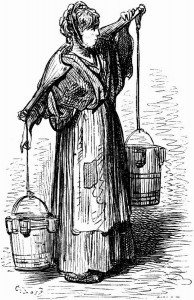
Rose Hill had no running water in the 1800s, so hauling water would have been a major part of servant work.
For anyone, housework at this time was dirty and difficult, particularly without modern conveniences like hot running water and washing machines. With continual soot produced by fires, lamps and candles, and no window or door screens, dusting and sweeping were daily activities. Well-off families also had furniture, glassware, porcelain and metal that had to be polished, and carpets and curtains that had to be cleaned regularly. The Swans also ran a farm, and women on farms often took care of chores like dairying and egg production. The family did not raise poultry for sale; however, they did produce about 1000 pounds of butter per year. We don’t know who churned butter at Rose Hill, but Margaret may have supervised hired help. Possibly they hired neighbors or the wives of their farm laborers to produce butter.
In the 1850s, Margaret’s husband Robert meticulously recorded his payment of wages to workers, including both farm laborers and some household servants. Female servants were paid $4 or $5 per month. By contrast male workers were paid $10 per month. His account book reveals the names and pay rates of these workers. Sometimes Robert writes a comment that tells a bit more about the person or his impression of them. While we are lucky to have any records of servants, the problem with these papers is that they present only the Swan family’s views on the workers. The servants themselves have no voice. To broaden our understanding of these people, we began searching for information about them from other sources, such as census, directory and cemetery records.
According to the Federal census, the Swans set up housekeeping in 1850 with two female domestic servants. By 1860 when they had five young children in the house, they had four female servants living with them. In the 1870 and 1880 censuses, when they had fewer and older children at home, they had three and two servants respectively. Only one of the servants named in the census is found in Robert’s account book, demonstrating the turnover among domestic workers
Tracking down these workers in other sources is difficult. After looking for the names of the Swans’ domestic workers in census records, Geneva directories and online genealogy sources, we’ve collected some data, much of it uncertain. Of the six domestic workers listed in Robert’s account books, we found very little definitive information, but enough hints to give us the outlines of a story.

Caricature from Puck magazine shows a demanding Irish servant terrorizing her mistress. Courtesy Library of Congress.
At this period in western New York nearly all women who worked as servants were young and unmarried. Some were African Americans, but many more were immigrants, with the Swans hiring mostly Irish girls in their early twenties. Many of those mentioned in Robert’s papers in the 1850s were probably married by the 1860 census and listed under their husband’s names. Unless we find out whom they married, they become essentially untraceable. One example of these difficulties is in the story of Hannah Cain. Hannah was mentioned in Robert’s farm account book in 1856, when he wrote that he fired her for “improper conduct with Tom.” Subsequently he reports that Tom married her and he returns to work. That is where her story ends. As there were three different men named “Tom” listed in Robert’s records during the 1850s, we don’t even know for certain whom she married. We did find a Hannah Kane Harvey and Thomas Harvey buried in St. Teresa’s Cemetery in Stanley. Their gravestone lists their births in Ireland and their dates fit with the timeline of our sources, as does the birth of their first child in 1857. Robert was inconsistent in spelling names, so his “Tom Halvey” could have been “Harvey.” The family was listed in the census for the Town of Hopewell from 1860 until 1900. If this is them, Tom continued working as a farm laborer. They had several children and bought their house at some point.
One of the longer-serving domestics at the house was Bridget Griffin, who was living with the Swans during the 1850 census, but, according to Robert, quit “in a hurry in a passion” in 1854. Based on the records at St. Patrick’s Cemetery she married John Batchelder, a farmer and English immigrant, and remained in the area. Two other domestics, Anne McGloon and Margaret Delaney, appear to have married men Robert employed, and raised their families in Geneva
Finding out specific information about the individuals employed as maids at Rose Hill is challenging, but researching their Irish names reveals their community’s eventual assimilation into the city of Geneva. Of the Brodericks, Murphys, Gallaghers, Stapletons and others who worked at Rose Hill, many remained laborers for their lives, but married, had children, and owned their homes by the time of their deaths. Some had daughters who worked in service like their mothers, but others had daughters who became dressmakers, milliners, teachers, or workers in new Geneva’s new industries. Their sons worked as clerks for the railroad and telephone companies. They built new institutions, like St. Francis DeSales Church and School. They fought in the Civil War and took on political roles, including as council members, mayor and police chief. In the end, although it is hard to pinpoint their individual contributions to the community, the Irish laborers at Rose Hill helped build the Swans’ success, but also built the 20th-century community of Geneva.
Next month: Farm Workers at Rose Hill


